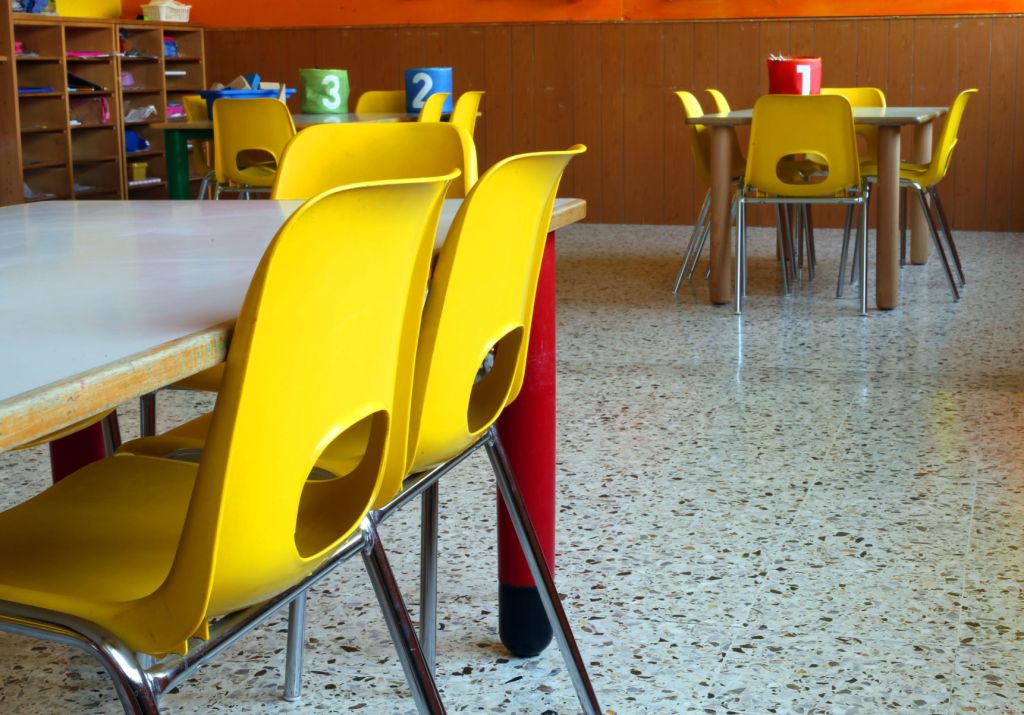Oregon’s kindergarten class dwindles in the pandemic
Published 2:08 pm Friday, June 4, 2021

- kinder
As Oregon struggled to keep students engaged during distance learning amid the COVID-19 pandemic, it also struggled to keep them enrolled.
Statewide, public school enrollment dropped nearly 4% from the previous 2019-20 academic year, state enrollment data show. More than 21,700 students were gone from Oregon’s school attendance rolls as of October 2020. That’s equivalent to the entire Hillsboro, Bend-LaPine or North Clackamas school district disappearing.
A detailed analysis of enrollment data by Pamplin Media Group shows that kindergarten students accounted for more than a quarter of the decline, meaning families opted not to enroll their children in public kindergarten during a school year that kicked off with most Oregon students still in comprehensive distance learning, rather than seat-time inside a brick-and-mortar school.
More than 6,000 fewer kindergartners enrolled in the state’s public schools during fall 2020 than the prior year, a decline of nearly 15%.
Bend-La Pine Schools saw a 13% decrease in kindergarten enrollment in 2020 compared to 2019. In Redmond School District, the drop in kindergarten enrollment was 20%.
“We anticipate enrollment will rebound once students resume in-person learning,” the Oregon Department of Education stated in a news release.
Racial divide
Statewide enrollment reports from the Oregon Department of Education also point to a disparity between white students and students of color. Analysis shows the biggest drop in kindergarten enrollment by race or ethnicity was among white students and Hawaiian/Pacific Islander students — though the latter group is a small sample size. The state saw nearly 5,000 fewer white kindergartners enrolled in the fall of 2020 than a year earlier; an 18% decline. (Kindergarten enrollment among Hawaiian/Pacific Inlanders dropped by 77 students, a decline of nearly 24%.)
While the demographic disparity is clear, the reasons for it aren’t.
Officials at the state level say more data is needed to assess the reasons why the decline in kindergarten enrollment among white students was so much higher than all but one of the other six racial and ethnic groups it tracks. The Education Department said it will have a clearer picture come fall 2021.
“It is hard to say for sure without having more concrete data and information directly from kindergarten families,” said Jennifer Patterson, assistant superintendent with ODE’s Office of Teaching and Learning. “We are cautious about making any inferences or drawing conclusions until we have reliable data.”
Patterson emphasized that fluctuating kindergarten enrollment isn’t unique to Oregon. Washington state saw more than 1.1 million students enrolled in 2019-20, but the state lost more than 11,000 kindergarten students from fall 2019 to fall 2020.
Even in typical school years, Patterson said, it’s not unusual to have shifts in enrollment between groups of students aging in and out of public schools, known as cohorts. When a big group of high school seniors graduate, for example, it will impact the next year’s overall enrollment. Similarly, a big bump in kindergartners may provide a one-year boost in total enrollment. But even for accounting for cohort fluctuations, enrollment declined sharply.
The start of the 2020 school year marked the largest drop in overall student enrollment in the past decade.
White flight?
McCall said the reasons for the steep decline in white kindergarten enrollment is hard to pinpoint, but she speculates that COVID-19 had nearly everything to do with it.
“I think it’s unique in kindergarten because it’s that grade that’s not mandatory, for one,” McCall said. “Some families may choose to wait it out a year. I also think child care was a factor as well. And maybe some families chose a combo of child care that had a kindergarten curriculum to it.”
Analysis, however, shows that pattern of disproportionate enrollment declines among white students is not limited to kindergarten in Oregon, though it is most pronounced at that grade level.
Portland Public Schools, Oregon’s largest district, saw 3,251 kindergartners enrolled at the start of the academic year. That’s 617 fewer than the prior year, a 16% drop.
“Kindergarten is not required in our state and this is obviously a really different year,” said Emily Glasgow, director of Early Learners for Portland Public Schools.
While kindergarten may not be mandatory, some argue it provides a critical springboard and paves the way for early literacy.
Ted Coonfield is a retired consultant who previously worked for the state of Oregon on a student retention initiative under Gov. Neil Goldschmidt to help reduce the high school dropout rate.
Coonfield said of all the factors that influence the high school dropout rate, childhood literacy was the top indicator.
“The main attributable factor, the main commonality among all dropouts were, they couldn’t read by the third grade,” Coonfield said. “If a kid can’t read by third grade, the chances of them dropping out of high school are astronomical.”
A 2010 Kids Count special report published by the Annie E. Casey Foundation highlighted the correlation further, noting that by the end of third grade, kids should be transitioning from “learning to read to reading to learn.”
“A person who is not at least a modestly skilled reader by that time is unlikely to graduate from high school,” the Kids Count report notes.
The statewide decline in kindergarten enrollment means school districts like Portland and Bend-La Pine could see an onslaught of students next year going straight into first grade.
“We’re thinking hard through the Early Learners department and our Office of Teaching and Learning about how first grade is going to need to look different in the fall, because we know we’re going to have kids that have never been to kindergarten,” Glasgow said. “We’re going to have kids who had all different kinds of experiences, remote experiences and personal experiences, private (learning). Yes, we always have a range, but it will be a much bigger range than ever.”
The decision to skip kindergarten may have backfired for some families.
Beaverton School District — Oregon’s third largest district — notified families in February that it would not allow children who didn’t previously attend kindergarten to go straight to first grade, despite the state’s law that allows it.
“Parents/Guardians don’t make retention decisions; those decisions are made at the school level by the building principal,” a message from Beaverton School District’s Teaching and Learning Department stated. “At the beginning of next school year, be assured that students will be assessed to see where they are in terms of their grade-level learning targets.”
Some districts defy trends
Despite statewide trends, not all districts saw the same sweeping loss of students.
In Clackamas County, the Oregon Trail School District saw just 17 fewer kindergartners enrolled this year, and a total enrollment drop of just 193, a decline of just over 4% in a district with 4,335 K-12 students.
Superintendent Aaron Bayer said he isn’t sure why his district had better luck with overall enrollment than neighboring districts, but an early investment in upgraded technology may have eased many families’ minds about distance learning.
“We were very fortunate that our community was able to pass a bond 10 years or so ago that really helped us with our infrastructure,” Bayer said. “We had a vision for technology in our district that created a brand new data center, all new infrastructure across our district. We have the capacity in every single classroom to livestream. Some other districts aren’t in that space.”
Another possible reason? Early engagement.
“Families are familiar with us and our schools before their child even enters kindergarten because we engage with people early on,” said Julia Monteith, the district’s public information officer. “We have a Little Steps program, so we invite kids of preschool age to come in and the family comes in and we have events at the school and the family becomes familiar with the teachers, they have activities, they get free books. There’s a lot of engagement before they even enter kindergarten.”
Some districts gained new students.
The data analyzed by Pamplin Media Group indicate school districts that saw either low declines or slight gains in kindergarten enrollment were rural or small school districts.
In Multnomah County, for example, Corbett School District saw its enrollment dip by almost 9% last fall, but welcomed 23 more students to kindergarten than the previous year — a 37% increase. Similarly, In Marion County, the Jefferson School District, which boasts just 781 students, saw 45 fewer students this year but a 16% jump in kindergarten enrollment.
If the COVID-19 pandemic widened the digital learning landscape, it also broadened parents’ horizons when it comes to educational opportunities, Bayer suggests.
“In the 21st century, public education isn’t a given. Not everyone wants to just drag their children up to the schoolhouse doors and let them go into public education, they want different opportunities and options,” the Oregon Trail superintendent said. “So I think then when you combine that with the pandemic, in which now the gate is kind of open a bit, folks then see, ‘All right, now there are other opportunities.’ And humans by nature are kind of opportunistic. I think this created an opportunity for folks, who weren’t really sold on public school anyway, to take a chance and do something different. I just think that’s community dependent. I would never say that one school district did something good, bad, wrong, awesome, that maybe led to any dips in what it is we see by way of attendance.”





